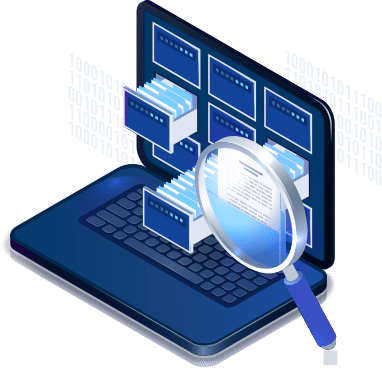12 Challenges in Financial Data Migration and How IT leaders Tackle Them
Data migration projects are notorious for either going over budget or failing to meet their original objectives. While financial services companies need to migrate data from time to time, they cannot afford any of the negative outcomes usually associated with such projects.
That’s because a failed data migration project can result in service disruptions, loss of customer trust, and, in some cases, heavy fines from regulatory bodies.
To avoid these outcomes, IT leaders must tackle challenges such as data integrity issues, legacy systems, and post-migration performance problems. Strategic planning, advanced tools, and skilled resources are essential to navigating these challenges and preventing significant financial and operational consequences.
1. Data Integrity and Quality Issues
Data migration affects data integrity by introducing errors, inconsistencies, or loss of data during the transfer process. This occurs due to issues like improper data mapping, incomplete data transfer, or corruption, leading to inaccurate, incomplete, or unreliable data in the new system.
Poor data quality leads to significant errors, regulatory breaches, and loss of customer trust. Also, financial institutions rely on accurate data for decision-making.
To tackle this challenge, implement rigorous data validation processes and use automated tools to identify and correct errors before, during, and after migration. Use tools like Data Ladder for data profiling, matching, and deduplication to maintain data integrity.
2. Data Loss Risks
During a migration project, it is common for some data to be accidentally deleted or corrupted. In financial services, this can disrupt operations and lead to compliance failures. For example, TSB’s IT meltdown in 2018, partly due to data migration issues, led to significant disruptions. It led to massive customer loss as well as a £49m fine.
To avoid data loss, you need backup and recovery plans, real-time data replication, and a thorough testing system. Use AWS Backup or Azure Site Recovery for data replication and recovery, and Broadcom DLP for testing and data loss prevention.
3. Compliance and Regulatory Requirements
During a data migration project, the risk of breaching regulations increases because data is moved across different environments, potentially exposing it to vulnerabilities like unauthorized access, data corruption, or loss. Also, all compliance measures – like encryption, access controls, and data retention policies – need to be maintained throughout the migration process. The increased movement of data during migrations introduces more points where compliance can falter.
Non-compliance results in hefty fines and legal repercussions, especially in a highly regulated industry like finance. For example, the Equifax data breach of 2017 cost them up to $700 million in fines.
To make sure that compliance is not affected during data migration projects, you have to conduct thorough audits, ensure data encryption, and collaborate closely with compliance teams. Use tools like IBM Guardium for data encryption, real-time monitoring, and compliance auditing.
4. Downtime and Business Continuity
There is always a risk of downtime during data migration because the process involves moving large volumes of data, reconfiguring systems, and taking some systems offline for a smooth transfer. That’s why data migrations interrupt normal operations and lead to temporary service outages and disruptions.
Downtime is especially worse for financial services companies because the industry relies on continuous availability and trust. Downtime means disrupted transactions and lack of customer access to services. In some cases, it leads to financial losses, reputational damage, and regulatory penalties.
While downtime may be unavoidable, you can minimize it through phased migration strategies, parallel processing, and clear contingency plans
- Phased migration – Gradually migrate data in smaller segments to reduce the impact on operations and allow for easier issue management.
- Parallel processing – Run the old and new systems simultaneously during migration to ensure continuity and minimize disruption.
- Contingency plans – Prepare backup plans to quickly address any unexpected issues that arise.
5. Legacy System Compatibility
On a larger scale, migrating data from legacy systems can be so complex that it took Deutsche Bank 13 years to complete the integration of Postbank’s IT systems with their own.
Integrating data from outdated systems into modern platforms is complex due to differences in data formats, structures, and technologies. In Deutsche Bank’s case, it was further complicated by regulatory challenges, internal resistance, multiple failed attempts, and the need to align disparate systems and processes across the two institutions.
Although 49% of data professionals mention working with legacy data architecture as their biggest challenge, legacy systems cannot be ignored because they contain vital historical data.
To overcome this challenge, use middleware and data transformation tools that can bridge the gap between old and new systems. You can use IBM WebSphere and Data Ladder for this purpose.
6. Data Security Concerns
Data security risks increase during data migration because sensitive data is in transit and may be exposed to vulnerabilities such as unauthorized access, data corruption, or breaches. The process of transferring data between environments often involves temporary storage or data handling by third-party systems, which increases the chances of security lapses. Encryption, both at rest and in transit, along with strict access control mitigates these risks to some extent.
To minimize the risk of data breaches during data migration, follow these steps:
- Conduct a security assessment – Identify potential vulnerabilities and risks before starting the migration. Use Tenable Nessus to scan for vulnerabilities.
- Use strong encryption – Encrypt data during transit and at rest to protect sensitive information. Use VeraCrypt for this purpose.
- Implement access controls – Restrict access to data during migration to authorized personnel only. Okta will help you do that.
- Perform regular audits – Monitor the migration process for any unusual activity or security breaches. Use Splunk to monitor data activity.
- Test the process – Conduct security testing, including penetration tests, before the final migration. Use ZAP or a similar tool here.
- Develop a contingency plan – Prepare for potential breaches with a clear incident response plan. Use ServiceNow Incident Management to automate your response in case of a breach.
7. Complexity of Data Mapping
Financial services organizations face challenges with data mapping during migration because they have to align disparate data structures and formats from different systems. The large volume of data that needs to be mapped increases the risk of errors, especially when dealing with legacy systems that may have outdated or proprietary formats. Inconsistent data standards across systems further complicate the process. These factors combined make data mapping one of the more difficult aspects of data migration.
Poor mapping results in lost or misinterpreted data. For accurate mapping, take the following steps:
To overcome the challenge of data mapping during migration, follow these steps:
- Conduct a detailed data audit – Review and document the data structures, formats, and schemas in all systems involved.
- Standardize data formats – Establish consistent data standards across all systems to facilitate smoother mapping.
- Use automated data mapping tools – Employ tools that can automate the mapping process and detect potential mismatches.
- Involve domain experts – Engage experts familiar with the data to guide accurate mapping.
- Test the mapping process – Perform thorough testing to identify and correct any mapping errors before full migration.
Data Ladder supports all five steps in overcoming data mapping challenges during migration. It helps with detailed data audits through profiling, standardizes data formats, and offers automated data mapping and transformation capabilities. Also, it facilitates collaboration with domain experts and enables thorough testing and validation of data mappings before full migration.
8. Stakeholder Coordination and Communication
Stakeholder coordination and communication become a challenge during data migration because the process involves multiple departments with different priorities and objectives. Misalignment or lack of clear communication lead to misunderstandings, delays, and errors, which jeopardizes the success of the migration project.
To overcome this challenge, you have to make sure all stakeholders are on the same page, but it is easier said than done. Case in point, HSBC’s attempt to modernize its core banking systems back in 2014. The project encountered significant obstacles, including poor communication between teams across different regions. These communication issues contributed to project delays and it took more than two years to finish the project.
To overcome the challenge of stakeholder coordination and communication during data migration:
- Establish clear communication channels – Set up regular meetings and centralized communication platforms to keep everyone informed.
- Define roles and responsibilities – Clearly outline who is responsible for what to avoid overlaps and confusion.
- Align objectives – Ensure all stakeholders understand the project’s goals and how their contributions fit into the bigger picture.
- Use collaboration tools – Implement project management tools like Jira or Slack to facilitate real-time collaboration and keep everyone on track.
9. Cost Overruns
Data migration projects often exceed their budgets due to unforeseen challenges like data quality issues, network bandwidth limitations, or scope creep. Underestimating the time and resources needed for the migration, legacy system integration problems, data corruption, data mapping errors, and similar issues lead to projects exceeding their initial budgets.
To address the challenge of budget overruns in data migration projects:
- Conduct thorough planning – Create a plan with a detailed project scope, timeline, and cost estimation that accounts for potential issues like data quality, legacy system integration, and network limitations.
- Build contingency budgets – Allocate additional funds and time to cover unforeseen challenges that may arise during the migration.
- Monitor progress closely – Regularly review the project’s progress against the budget and timeline to detect deviations as they happen.
- Involve experienced professionals – Find in-house resources or consultants that have conducted big data migration projects before. They will anticipate the unexpected and guide you through the process.
10. Post-Migration Performance Issues
Post-migration performance issues become a challenge when the new system does not handle the same workloads as efficiently as the old system. This can occur due to improper system configuration, inadequate testing, or differences in how data is processed in the new environment, leading to slower response times, increased resource consumption, and potential system downtime.
RBS’s 2012 IT upgrade failure, which cost them a £56m fine and millions of disappointed customers, shows how things can go wrong after a migration/upgrade project.
To address post-migration performance issues:
- Conduct thorough pre-migration testing – Simulate real-world workloads in the new system to identify potential performance bottlenecks. Use Apache JMeter to run different simulations and stress test the system.
- Optimize system configuration – Make sure that the new environment is properly configured to handle the expected workloads. Use SolarWinds Server & Application Monitor or a similar tool to monitor system performance and fine-tune configurations for optimal performance.
- Monitor performance post-migration – Continuously monitor the new system’s performance and address any issues immediately. Use Dynatrace or a similar tool for real-time monitoring and analytics.
- Plan for contingencies – Have a rollback or remediation plan in place in case of significant performance degradation. Veeam Backup & Replication is a good tool for easy rollbacks and recovery.
11. Lack of Skilled Resources
Finding skilled resources for a data migration project is always a challenge, because experienced systems analysts, data engineers, and DevOps professionals are always in high demand and short supply. This lack of skilled resources is not going away any time soon – by 2026, more than 90% of organizations all over the world will experience an IT skills gap.
To address this challenge, invest in training your team, hire specialists, or partner with external consultants to fill skill gaps. Some of the courses that will help you upskill your team for data migration include CompTIA Data+ Certification, Certified Kubernetes Administrator (CKA) by Linux Foundation, Systems Analysis and Design Specialization, and Google Cloud Professional Data Engineer Certification.
12. Managing Data Duplication
Data duplication occurs during data migration because the same data may exist in multiple places or systems, and when migrating, these duplicate records are unintentionally transferred to the new system. This happens due to inconsistent data sources, poor data quality, or errors in the data mapping process.
Duplicate data causes operational inefficiencies and affects decision-making accuracy. To address this challenge, use data deduplication tools like Data Ladder. These tools identify duplicate records across multiple data sources before migration, and help you make sure that only unique, clean data is transferred to the new system. Data Ladder’s advanced algorithms accurately match and merge records, even when data is inconsistent or incomplete. This reduces operational inefficiencies and improves decision-making accuracy in the target environment.
How Data Ladder Helps with Financial Data Migration
Data Ladder helps address key challenges like data integrity, duplication, and accuracy. Our powerful data profiling, matching, and deduplication tools help identify and resolve inconsistencies across data sources, so only clean, accurate data is migrated. By automating data mapping and validation, Data Ladder reduces the risk of errors during migration and ensures compliance with regulatory standards. This leads to more efficient migrations, minimizing disruptions and enhancing overall data quality in the new system.
Learn more about how we help financial services companies, or download the software and start your 30-day free trial today.










































